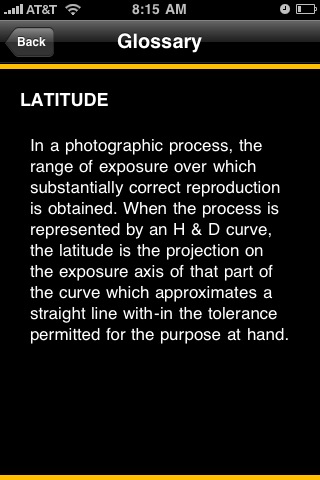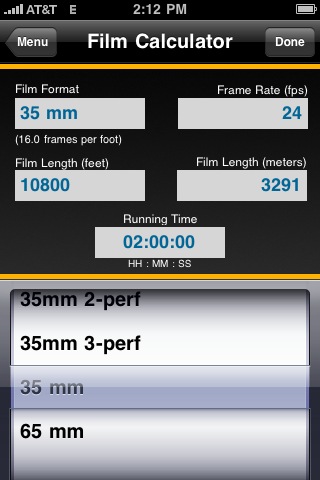Kodak’s new Film Calculator and Glossary is now available as a free download from the iTunes App Store.
It helps you calculate the running time for any length of film in any format. It also tells you how much film you’ll need for a specific amount of time.
To use the Film Calculator, enter the information you know: format, length, run time or frame rate. The App then calculates and supplies the other variables. Film length can be measured in feet or meters for all formats, including Super 8, 16 mm, 35 mm, three-perf 35 mm, and 65 mm film.
For more information, visit the Kodak website or go to the iTunes App Store
The application also includes Kodak’s very helpful and well-written glossary of practical definitions for hundreds of production terms–useful for everyone, from students to grizzled experts.
It’s a good airport read next time your flight is delayed, and by the time you arrive on set or for a panel discussion, you’ll sound like a guru or grand wizard of a technical committee. Here’s a sampling:
 4K: A digital image 4096 pixels wide. A standard 4K scan of a full 35 mm film frame is 4096 x 3112 pixels.
4K: A digital image 4096 pixels wide. A standard 4K scan of a full 35 mm film frame is 4096 x 3112 pixels.
3D LUT: A 3-dimensional lookup table is a static color translation table that converts a set of three input color values to another set of three output color values.
Anamorphic: An optical system having different magnifications in the horizontal and vertical dimensions of the image. Basically, special camera lenses squeeze the image horizontally at the time of exposure. This 2-to-1 (sometimes 1.3:1) squeeze uses as much of the negative available and still allows room for an optical sound track on the release print. The print is un-squeezed by the projector lens, which gives the characteristic wide screen (2.35:1) aspect ratio.
Gamma: Measurement of the contrast of an image, representing the slope of the straight-line portion of the characteristic curve.
D Log H Curve: The curve showing the relation between the logarithm of the exposure and the resultant density on the processed film. Also called the characteristic curve.








